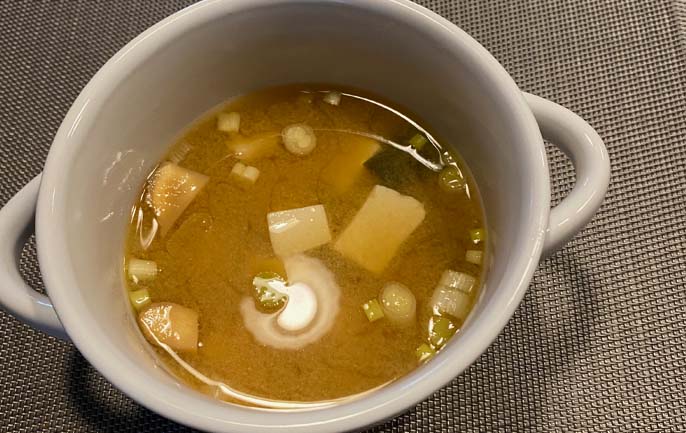I have grown to love Miso Soup! It’s one staple I order when I’m at a Japanese restaurant. I’ve often wanted to have it at home., but have only tried the pre-packaged or instant variety. Neither of those tasted quite the same. So, I embarked on an adventure to develop my Miso Soup recipe. Soups are one of those things I consider to be pampering!
The benefits of eating miso are that it is an excellent source of iron, calcium, potassium, B-vitamins, and protein. The soybeans from which miso is produced contain the isoflavone Genistein, which has been shown to inhibit cancers ability to grow and spread.
Miso is a traditional Japanese condiment. It’s a thick paste made from fermented soybeans. You can use miso paste to make sauces, soups, dressings, and more. By itself, it tastes a bit salty and savory. Miso paste made from soybeans is considered a “complete protein” because it contains all the essential amino acids that are needed for human health.
Table of Contents
The Journey
If you search online, you will find a myriad of recipes. My approach is to look for similarities. That includes ingredients, reviews, etc. I was fortunate this time around to find a combination that worked and tasted nearly identical to that of my favorite restaurant.
Ingredients for Miso Soup
The list below contains the ingredients that I sourced from Amazon. I purchased tofu, green onions, and mushrooms from my local grocery. This recipe makes 4 1-cup servings. If you have any leftovers, you’ll want to refrigerate them and consume over the next day or so.
- 4 cups water
- 1 4-inch piece of Kombu
- 1 6-gram packet Dashi
- 1 5-gram bag Bonito flakes
- 8 oz extra firm tofu, cubed
- 1 teaspoon dried Wakame
- 3 Tablespoons Miso Paste
- 2 green onions, chopped
- 3-4 white button mushrooms, thinly sliced (optional)
Directions
It's very important not to boil your miso soup. Boiling will kill off the beneficial probiotics.
- Heat water over low heat.
- Add kombu and dashi.
- Cook over a low-medium heat until the broth starts to simmer.
- Stir in bonito flakes.
- Remove from heat.
- Let broth sit for five minutes, stirring occasionally
- Strain into an appropriate size bowl.
- Rinse your sauce pan.
- Return the broth to the pan and start heating on low.
- Remove 1 cup of the broth into a small mixing bowl. Add the miso paste and mix thoroughly.
- Return the miso mixture to the pan.
- Add the tofu cubes and wakame.
- If you’re using mushrooms, add them now.
- Stir over low-medium heat until warmed through. You don’t want this to boil!
- Serve with the chopped green onions.
Variations
The first time I made this, I used dried Shitake mushrooms from My Spice Sage. To reconstitute mushrooms, rinse under cold water, then place mushrooms in a bowl, cover with boiling water and soak for 15-20 minutes. this step is important because mushrooms shouldn’t be crunchy!
Carrots make a great addition as to peas. I prefer to pre-cook sliced carrots and add them in with the tofu. Spinach makes a good substitute for the dried wakame. Washed and chopped bok choy is also an excellent addition.
The next variation I intend to try is garnishing my miso soup with Aburaage (twice fried tofu slices). Some references mention being able to purchase this prepared, but I think it would be better fresh.
Nutritional Information
The following nutritional information is from the manufacturer of the miso paste I used. Additional information can be found at the USDA.
